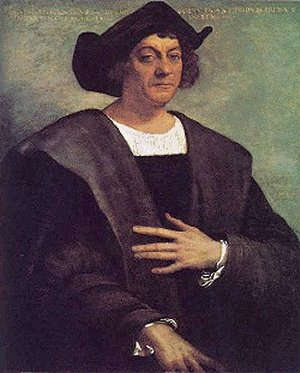On Aug. 3, 1492, the day after the expulsion of the Jews from Spain, Christopher Columbus set sail from Spain in search of India. Columbus wrote in his first entry in Journal of the First Voyage–
So after having expelled the Jews from your dominions, Your Highnesses, in the same month of January, ordered me to proceed with sufficient armament to the said region of India.
The expedition’s interpreter, Luis de Torres, was a Jew who converted to Christianity shortly before the voyage. There is no concrete evidence that other Jews joined the expedition.
Columbus went in search of a route to India shorter than the overland route through Arabia. The goal was to enter the spice trading business which was dominated by the Arabs and the Italians.
Columbus first sailed to the Canary Islands, where he restocked provisions and made repairs. On September 6, 1492 Columbus sets sail from the Canary Islands for a five-week voyage across the ocean. Land was sighted on Oct. 12 and the island was named San Salvador by Columbus, who assumed it was on the east coast of Asia. After exploring Cuba and Hispaniola, Columbus left 39 men in present-day Haiti to start the first European settlement in the New World.
On Mar. 15, 1493, Columbus returned to Spain. On Sep. 24 of that same year he began his second expedition with a much larger fleet and many more men, in which he explored the islands of Central America.
Columbus sailed twice more to the Americas. During his third voyage he governed Hispaniola for a while, but was arrested and brought back to Spain on charges of using barbaric acts of torture to govern. He was later released and allowed to sail on his fourth voyage, during which he and his men were stranded in Jamaica for a year.
Christopher Columbus died in 1506, a wealthy man, never realizing that he had colonized a New World.
See also-
